The signs of prescription drug addiction can often be difficult to identify. Once an individual identifies the symptoms and side effects of prescription drug addiction, the next step in the recovery journey become clear.
Understanding Prescription Drug Addiction
Learn about prescription drug addiction
Many people believe that prescription medication is safe and impossible to become addicted to since the FDA approved it, the prescription is written by a licensed doctor, and it’s dispensed by a licensed pharmacist. Yet just because a medication may be a legally prescribed substance doesn’t mean it doesn’t have addictive properties or that it is safe for everyone. In fact, some of the most addictive substances are prescription medications. After marijuana, prescription medications are the most abused class of drugs by those over the age of 13 in the U.S.
The CDC has classified prescription drug abuse as an epidemic, noting that the number of prescriptions written for substances with addictive properties is steadily increasing each year. Research also showed that more than a third of all the individuals over the age of 11 who try drugs for the first time use prescription medications. Furthermore, younger individuals who develop prescription drug addictions are at increased risk for developing addictions to elicit drugs when they are older.
The most commonly abused prescription medications fall into three categories:
Opioids – Used for short-term and chronic pain control and abused for this property, in addition to euphoric-like feeling produced by these medications.
Central Nervous System Depressants – Sometimes referred to as tranquilizers and depressants, this class includes barbiturates and benzodiazepines, which are among the most abused drugs today. They create a calming, relaxing sensation and dull distressing emotions to the point they become tolerable.
Stimulants – This class increases production of neurotransmitters and activity in areas of the brain associated with alertness, energy, memory, and concentration. These can also produce a sense of elation and overall pleasurable sensation, leading to the individual viewing the world from behind rose-colored glasses.
Prescription drug abuse usually occurs due to the mind altering effects of a medication and the pleasure experienced, such that individuals begin to take them in ways not intended by the prescribing physician. Other times, individuals steal prescriptions from friends or family.
When used as prescribed, prescription medications are safe for treating psychological or medical conditions. However, when taken at higher doses or when there are no symptoms present, these medications can affect the brain and nervous system in ways that resemble the effects of illegal drugs.
Many people don’t understand how serious prescription drug abuse is, and you may find that others treat you as if you are weak or flawed if you have become addicted to a legally prescribed medication. This may make it less likely for you seek out treatment for fear of confirming such judgments.
At Riverview, we are here to tell you that there is nothing inherently flawed within you and that you are not alone. Our trained, compassionate staff can help you become free of your addiction and help reinstall hope related to your future.
Statistics
Prescription drug addiction statistics
It has been estimated that approximately 2.7% of adults in the U.S. abuse prescriptions medications. Graduating high school seniors reported rates of prescription drugs use and dependence, which indicated that this is the most common type of abused drug in this population. About 5% of the members of this age group population stated they’d used Oxycodone, while about 8% admitted to taking Vicodin for non-medical purposes. It is difficult to obtain accurate rates of prescription drug dependence and abuse however, as many individuals, especially youth, with this problem don’t seek treatment. In general, most of those who seek out treatment are individuals who are refused access to the drug to which they are addicted.
Causes and Risk Factors
Causes and risk factors for prescription drug addiction
There is no common explanation for what causes drug addiction. It is believed that there are numerous factors including individual differences, environmental influences, life factors, and history of use of substances, among many others that interact to cause an addiction problem. Some causes that have been linked to abuse of prescription medications include:
Genetic – Experts assert that some people are born with a genetic predisposition to develop a prescription drug problem. It is believed they are born with certain differences in their brains and the abuse of prescription drugs leads to further changes in brain chemistry, resulting in addiction.
Learning Factors – Individuals who use prescription drugs due to the natural effects of the drug or due to using it in a manner not intended by the prescribing prescription, experience a rush or high consisting of desirable sensations that leads to an increased likelihood of taking it again. While the intended purpose for taking the drug may remit, the desire for the drug continues to exist due to the reinforcing properties of the drug.
Temperamental Qualities – There is evidence that inborn temperamental qualities may predispose an individual to develop a prescription drug problem. For example, those who are born with a preference for a high activity level may take stimulants, while those both with a preference for a limited activity level may take opioids.
Signs and Symptoms
Signs and symptoms of prescription drug addiction
While symptoms will also differ based on the drug used some common symptoms include:
- Neglected responsibilities in multiple settings
- Using the drug in hazardous situations or risky behavior (e.g. driving while high)
- Legal problems, including those due to poor judgment or illegal behavior associated with obtaining the drug
- Relationship problems due to fighting, aggression, anger outbursts, becoming too lethargic to go to work or school etc.
- Work problems
- Tolerance
- Substance use to avoid or alleviate withdrawal symptoms
- Sense of loss of control related to drug use, such that more is taken than intended or it is used more frequently than planned
- Most of the day is spent thinking about, obtaining, using, or recovering from the drug
- Lack of participation in activities once enjoyed
- Loss of a social network
- Continued drug use despite the awareness it is leading to or exacerbating physical or mental problems
Effects
Effects of prescription drug addiction
The effects of prescription drug misuse will also depend on the type of medication used. Some common categories of effects include:
- Emotional numbing
- Problems with interpersonal relationships or loss of a social support network
- Social rejection and/or social withdrawal
- Shame or guilt
- Employment problems, decreased productivity, loss of motivation, unemployment
- Lowered academic performance
- Financial problems
- Legal difficulties and incarceration
- Psychological problems resulting from mechanisms of action related to the drug
- Impaired judgment and decision making, leading to high risk behaviors
- Transitioning from using prescription drugs to using illegal drugs, especially when a legal prescription is no longer accessible
- Criminality
- Motor vehicle accidents and accident related injuries
- Perceptual changes
- Withdrawal symptoms
- Loss of self-esteem and self-confidence
- Fear of failure in various aspects of life including work, school, parenting, among others, resulting from the loss of the effects of the substance
- The belief that unless the substance is used, interaction with others will be inappropriate, resulting in the loss of friends.
- Adjustment reactions based on the need to live in the world as it is and not as it was experienced based on the mind altering properties of the drug
Co-Occurring Disorders
Prescription drug addiction and co-occurring disorders
It can be difficult to determine which disorders most frequently co-occur with prescription drug abuse, given that many individuals use them to self-medicate pain. Yet there is evidence that certain disorders and conditions are likely to occur along with prescription drug abuse. These include:
- Depression
- Anxiety
- Somatization disorders
- Poly substance abuse (use of drugs from at least three different classes)
- Illegal drug use disorders
- Attention deficit hyperactivity disorder (child and adult onset)
- Conduct disorder
- Antisocial personality disorder
- Suicidal ideation and behavior


